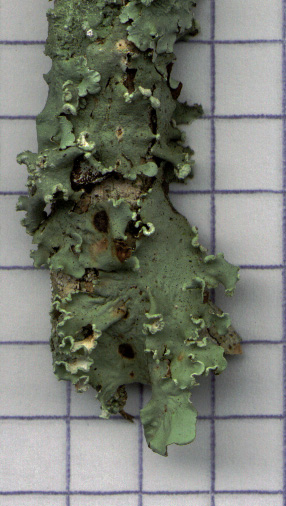![]() he measure of energy created into biological substance in any living system is measured as primary productivity.
he measure of energy created into biological substance in any living system is measured as primary productivity.
principles | partnerships | participants | ecosystems | comparative biomes | graph | conditions | summary
| ingredients | process | outcomes | ||||
|---|---|---|---|---|---|---|
Input |
+ |
Output |
= |
+ |
||
Through put |
equals |
products |
and |
wastes |
||
| plus | carbon dioxide & trace elements | yields | glucose | plus | oxygen | |
principles | partnerships | participants | ecosystems | comparative biomes | graph | conditions | summary
All living systems are productive organisms or collections of organisms that generate waste.
Four principles of waste in any system
![]()
The dung beatle of Africa, which the ancient Egyptians took as their image for making ornamental scarabs, represents an animal that uses the feces of elephants or other large animals to survive. Animals that fed off of waste material or detritus, are called detritvores. They, like fungi are decomposers who break-down complex products or by-products of other creatures and these decomposers are called saprotrophs.
 Lichens are even more instructive of the second priciple above, because they are a composite creature. By a composite, we mean an organism composed of two different creatures, living together. In biology living together is calle symbiosis. Symbiotic lichens are made of creatures that live effectively, efficiently, and successfully utilizing each other's byproducts.
Lichens are even more instructive of the second priciple above, because they are a composite creature. By a composite, we mean an organism composed of two different creatures, living together. In biology living together is calle symbiosis. Symbiotic lichens are made of creatures that live effectively, efficiently, and successfully utilizing each other's byproducts.
One
The algae, green photosynthetic creature makes food.
Two
The fungi, a form of life that lives by breaking down complex molecules into simpler compounds for other creatures, usually bacteria and plants to utilize in their metabolism.
The fungus is a saprotroph and the algae is a producer and they live together well in the body of the lichens. Lichens are found all over the world and the predominate in the tops of mountains and the polar or frigid zones where they comprise a large portion of the tundra biome. They are a perfect example of how one creatures waste is another organism's food.
principles | partnerships | participants | ecosystems | comparative biomes | graph | conditions | summary
All ecological systems need producers, consumers and decomposers. That means that detritovores or saprotrophs are just as necessary as any other component in an ecological system in order to keep sufficient material recycling. This reuse of materials is necessary to feed all of the participants in the ecosystem.
Participants in an ecosystem either, make their own food -- ![]() called producers, or eat others --called consumers, or breakdown the byproducts of others -- called decomposers.
called producers, or eat others --called consumers, or breakdown the byproducts of others -- called decomposers.
| level | name | function | economic role |
1 |
autotroph | create its own food | producer |
2 |
heterotroph | digest other creatures | consumer |
3 |
saprotroph | break down complex matter | decomposer |
Waste is a measure of productivity, just as inefficiency in production can be estimated through measuring waste.
principles | partnerships | participants | ecosystems | comparative biomes | graph | conditions | summary
Net versus gross primary productivity is fundamental in ecology.
![]()
Ecological Productivity
 |
Radiant energy is available sunlight | ||
|---|---|---|---|
add |
gross primary productivity |
energy obtained by producer | |
minus |
respiration |
energy used by producer | |
 |
equals |
energy left for consumers |
![]()
principles | partnerships | participants | ecosystems | comparative biomes | graph | conditions | summary
Productivity of different plant associations or biocenose:
| Ecosystem type | maximum net primary productivity (gr/m 2/yr) |
|---|---|
Tropical rainforest |
3,500 |
Temperate forest |
2,500 |
savannah |
2,000 |
temperate grassland |
1,500 |
250 |
|
3,500 |
|
reef |
4,000 |
swamp & marsh |
3,500 |
Begon, Harper, & Townsend, Ecology, 2d ed., (Cambridge, Ma.: Blackwell Scientific, 1990).
Graph of different plant communities -- called biomes -- with respect to theirrelative productive capacities.
Productivity, trophic levels and available energy
principles | partnerships | participants | ecosystems | comparative biomes | graph | conditions | summary
Productivity changes with altered circumstances.
| The affect of water on productivity | The influence of heat on productivity |
Law of the minimum or limiting factors
So under the above circumstances certain trace elements act as limiting factors in that the nutrients needed in the least amount may pose a confining condition on plant growth causing yields to decline when the following nutrients are unavailable in sufficient quantity and in the appropriate ion quality:
Too little or too much of theses trace elements have a marked negative influence on plant growth when sufficient carbon dioxide or water availability fluctuates.
Just the correct amount of nutrient to stimulate growth is known as the law of the optimum.
principles | partnerships | participants | ecosystems | comparative biomes | graph | conditions | summary
Summary
Some kinds of “alleged waste” may have positive, neutral, or negative affects on productivity in ecological systems.
In order to economic returns the ecological productivity of water, nutrients and plant growth must create surpluses.
principles | partnerships | participants | ecosystems | comparative biomes | graph | conditions | summaation